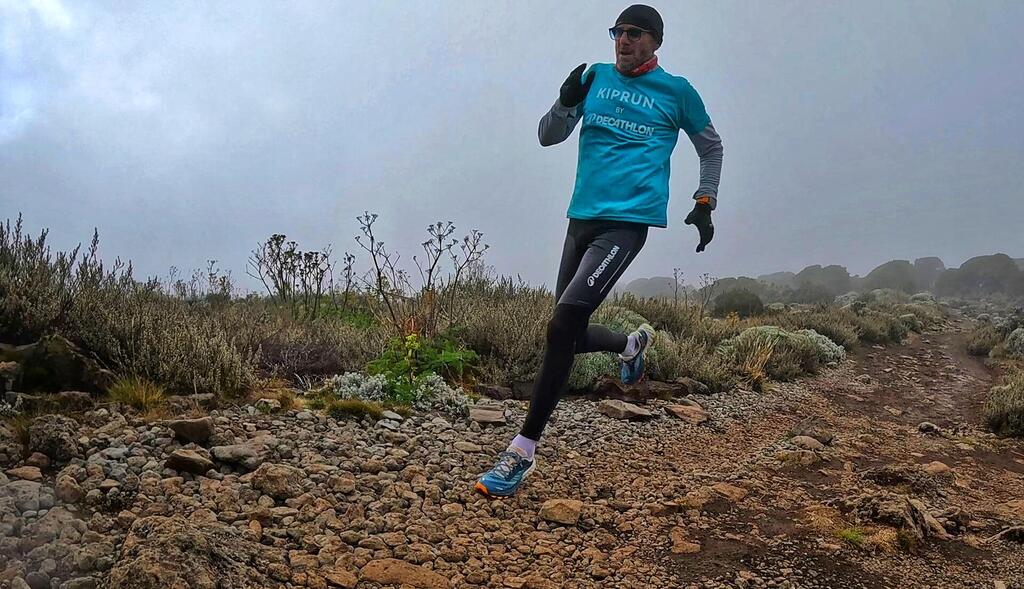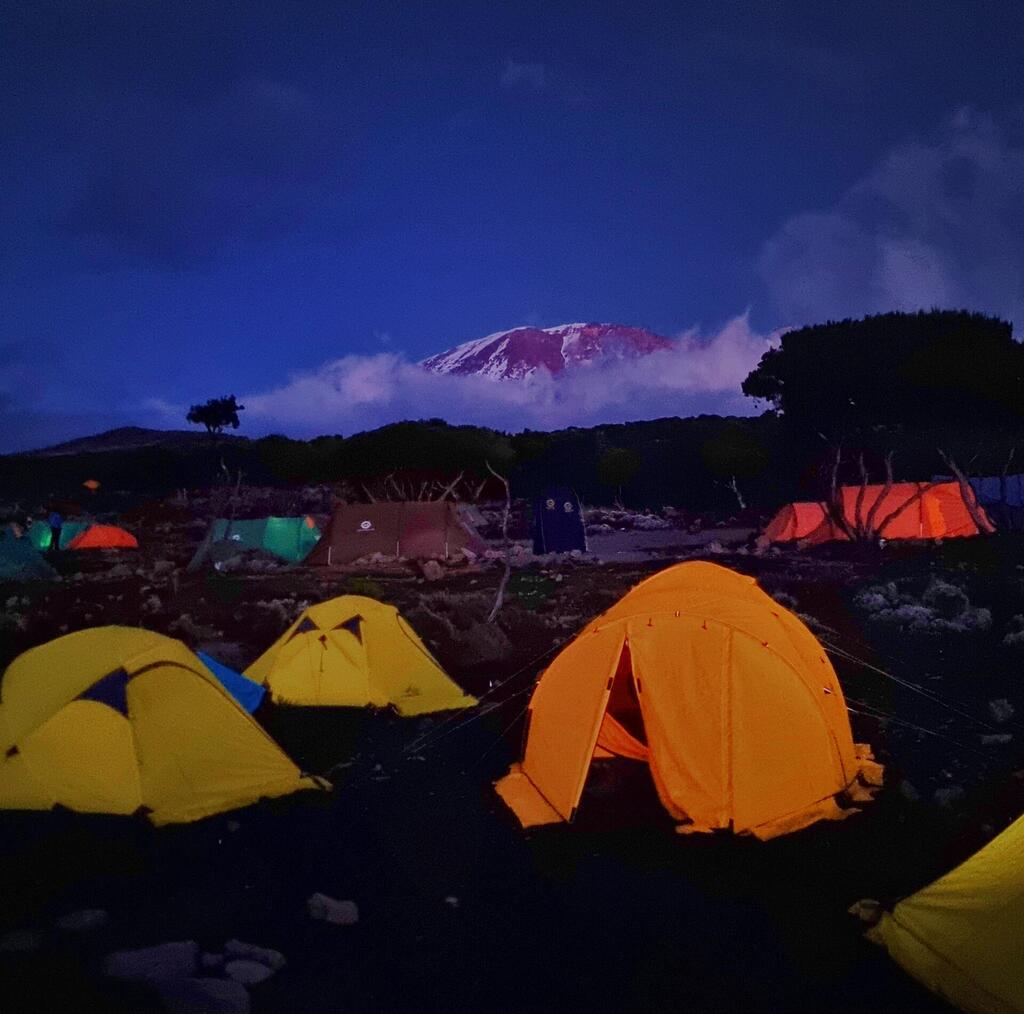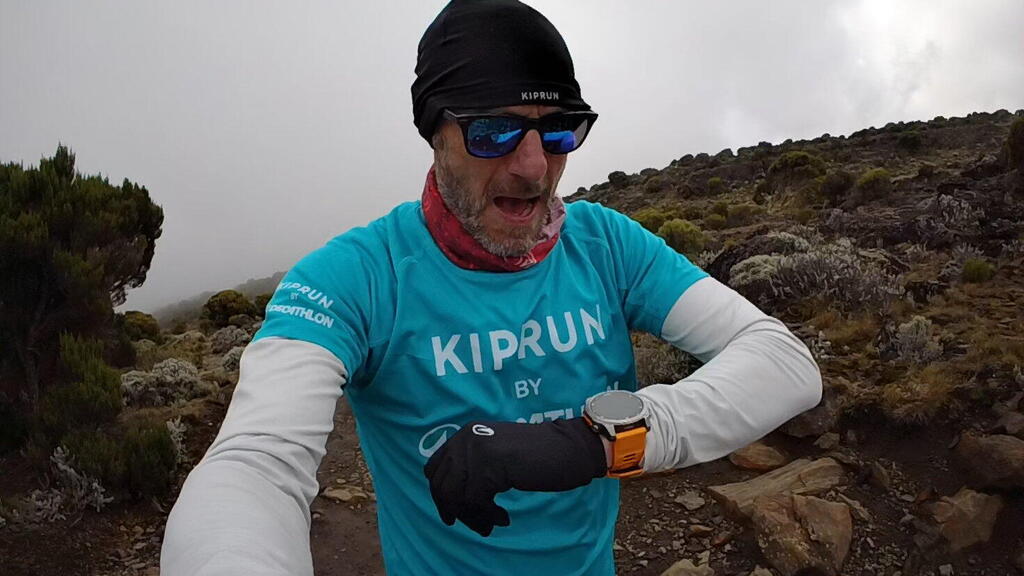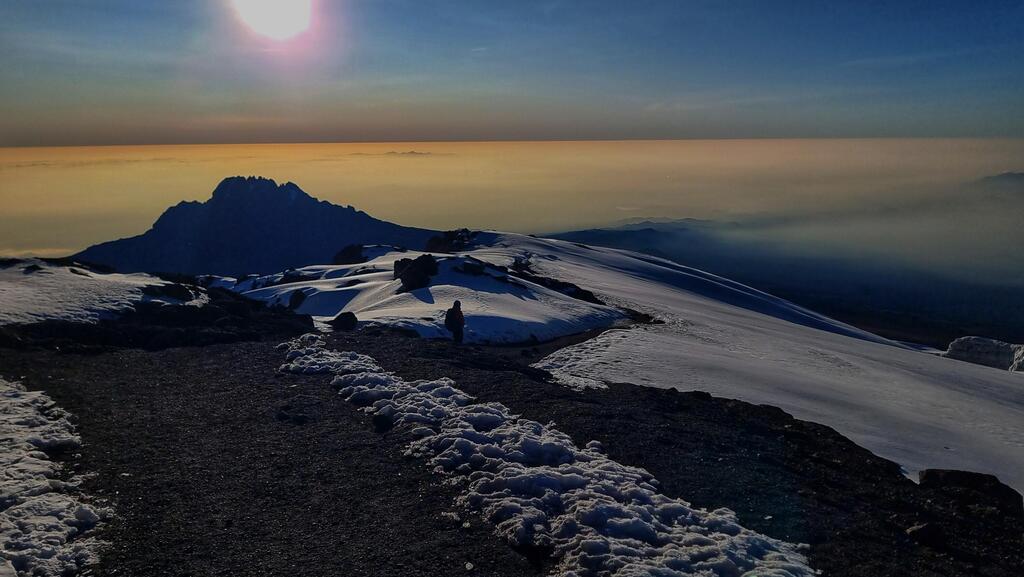After countless regular climbs of Mount Kilimanjaro, Daniel Keren decided to turn the journey to the summit of Africa's highest mountain into an extreme challenge – to run, alone, to the top. The Israeli adventurer combined his two great passions – mountain climbing and running, and the famous mountain, towering at 19,340 feet, provided the perfect backdrop for the journey.
How was the idea of trying to run to the summit born?
"I have climbed many peaks, including the summit of Everest, and I have ascended Kilimanjaro dozens of times because I am a mountain climbing instructor and take groups there. During the penultimate expedition, I told myself that this could be a different experience, to ascend alone instead of with a group, to challenge myself with something different, new, and extraordinary, and simply run to the top. That's how the idea came to fruition about a month ago."
Keren set out on the mission after a long training period. "This challenge has three aspects," he explained. "First, you ascend or run from an altitude of 5,000 feet to almost 12,500 feet. This means a significant amount of elevation gain. To ascend 14,000 feet, you need to climb the equivalent of 1,200 floors in a gym; it sounds a bit insane, but yes, 1,200 floors.
"The second aspect is the thin air, and for that, I used the Wingate Institute, which has a room called the hypoxic chamber. In the hypoxic chamber, they simulate reduced air density, as if you are in the mountains. I trained there for several consecutive days as if I were at an altitude of 14,000 feet. The third aspect, which is no less complex, is the fact that you go from tropical weather, from a tropical forest, to an altitude of about 12,500 feet and -4 degrees Fahrenheit."
Can you take us to those moments before you set out?
"Before starting, I had to sign various documents from the Tanzanian park authority because I chose to ascend via a very unconventional route that is prohibited for hikers and is essentially closed to climbing unless one requests special permission. This is a very steep and direct ascent to the summit of the mountain. I encountered very harsh weather conditions as I approached the summit.
Get the Ynetnews app on your smartphone: Google Play: https://bit.ly/4eJ37pE | Apple App Store: https://bit.ly/3ZL7iNv
"The last 3,280 feet are essentially a glacier with extreme weather that required me to apply my skills as a mountain climber; I walked with crampons and trekking poles. The weather slowed me down a bit, but on the other hand, it made the challenge exceptional. I have climbed this mountain dozens of times, and here I was ascending from a different direction that I had never climbed before, and very few people have taken this route."
"At every stage, it is essential to monitor the body and the environment. To ensure that oxygen levels do not drop dangerously, that the barometric pressure does not indicate an approaching storm, that the pace of progress is as planned, that I am on the right path, and that it's time for the next energy and hydration boost."
"Above 8,200 feet, the closed view of the forest opens up, and if it weren't for the heavy fog, I would have seen the slopes of the mountain that I had seen so many times before. Rain mixed with hail was a bit concerning, not because of the cold or the wetness, but because of my fear of harsher weather higher up the mountain."
Were there moments when you felt close to breaking?
"No, it was too brief to break; it only lasted a few hours. There were moments when I had to muster all my strength because really above 10,200 feet, there is no oxygen, and no matter how determined you are and how fit you are, ultimately, after all those efforts, your body stops you; the lack of oxygen stops you, but what you need up there is also needed at sea level, and that's called patience."
"Without stops, without rest, in continuous progress, I reached the truly challenging part: the ascent from 16,400 feet to the summit. There is no talk of running at all, and even if you want to talk – you can't. The oxygen is scarce, and the body demands every possible molecule that enters the lungs. The secret is a steady pace. Any deviation from it causes rapid panting, an increased heart rate, and standing still – no matter how determined I am. Slowly and gradually, that is the secret to the mountain and also to life."
Running up mountains is a common thing?
"There is a genre of runners who are usually also mountain climbers who choose to do this. I am not the first to climb Kilimanjaro in what is called running. I also ran in the Everest Ultra Marathon; it's a kind of madness."





